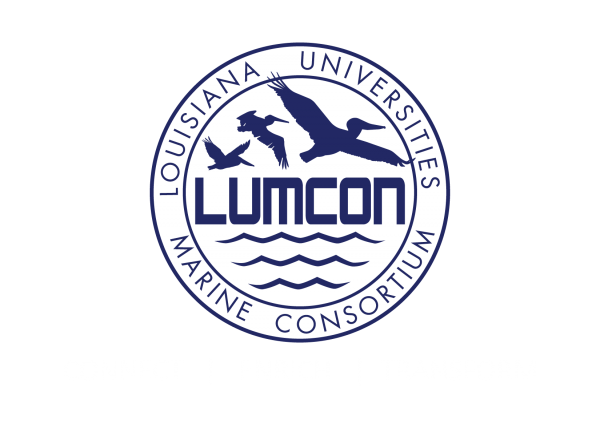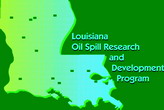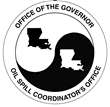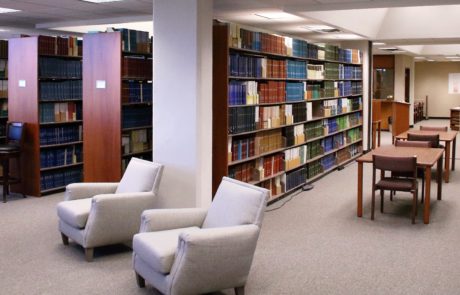LIBRARY
MAIN CATALOG (Electronic Resources/LUMCON Library)
Click here to search the Dispersants Bibliography
Click here to search Effects of Offshore Oil and Gas Development Bibliography
ABOUT THE LIBRARY
The LUMCON Library collection was originally housed in Ellender Memorial Library, located at Nicholls State University in Thibodaux, Louisiana. After completion of the DeFelice Marine Center in 1986, the collection was moved to its present location. Since that time, the Library has become an active resource center for LUMCON faculty and staff as well as Consortium member institutions, visiting researchers, students, and the public.
The library contains a computer lab and several study spaces available to visiting students, scientists, or groups (such as attendees of a writing retreat).
The collection and development of library materials reflects LUMCON’s research programs. The collection has approximately:
- 4,600 monographs
- 5,800 bound volumes
- 200 journal titles
- 26 current journal subscriptions
- 850 maps
- 35 atlases
- 3,600 government documents
- 1,500 reprints
In addition, the library houses a complete collection of research products generated by DeFelice Marine Center personnel since LUMCON’s inception.
HOURS OF OPERATION
- The LUMCON Library is staffed Monday through Friday from 7:00 AM to 3:30 PM. All visitors are welcome during these hours.
- The Library is closed to the public on weekends, state holidays, and when the librarian is not on site. Before visiting the facility, please call 985-851-2875 to ensure the Library will be open.
- All LUMCON staff, summer students, and resident visitors have 24-hour access to the Library. If the doors to the Library are locked, the security guard will open them for you.
CIRCULATION
- Books can be checked out by filling out a card at the circulation desk. The length of time a book can be checked out varies depending on the patron’s status. Books may be renewed by contacting the department, but all items are subject to recall at any time.
- Interlibrary loan service is available for LUMCON faculty, postdocs, lab personnel, and summer students. Although we strive to get items at no charge, the patron may be asked to pay for interlibrary loan charges under certain circumstances.
- Reserve items, reference materials, and journals must remain in the Library. The Library has no photocopier, but copies or scans can be made in the LUMCON main office.
- All materials must be checked out before removal from the Library, without exception.
- Library materials can be placed on reserve for summer classes. A list of items to be placed on reserve should be provided to the librarian as soon as possible.
- When returning material that has been checked out, please drop off items at the circulation counter.
Food is not allowed in the Library under any circumstance. Drinks are only allowed with prior approval by the librarian or the security guard.
INTERNSHIP PROGRAM
The LUMCON Library is available as an internship site for graduate-level students who have completed at least two semesters toward a Master’s degree in Library and Information Science. Applications will be accepted on a continuing basis and internships may be completed during any semester. Prior library experience or an undergraduate degree in science is desirable, but not necessary. Credits will be awarded based on the number of person-hours completed (40 person-hours per credit hour).
The internship will consist of both field experience, encompassing many operations of a special library, and a special project in technical services. The Librarian will give the intern an overview of reference services, technical services, library administration, and budgeting, and will guide the intern through special projects. The LUMCON Library uses SIRSI/Dynix’s Symphony Integrated Library System as well as OCLC for Cataloging/Interlibrary Loan services.
Contact the Librarian for more information or to apply for an internship.
ACKNOWLEDGMENTS
We would like to thank the following individuals for their guidance and input when creating the Dispersants Bibliography:
-
- Victoria Broje, Per Daling, Alun Lewis, and Francois-Xavier Merlin offered valuable assistance in the early phases of this project. Per Daling’s support was especially noteworthy, by providing conference proceedings that otherwise could not be obtained.
- Deborah Ansell, ITOPF’s librarian, contributed by sharing her sizeable list of library holdings on dispersant publications with us, and filling in gaps where existing citation information was incomplete.
- Likewise, Julie Anne Richardson, librarian for Environment Canada, compiled a publication listing on dispersants housed in her collection, which provided us with additional citations for our project.
- Qianxin Lin at Louisiana State University provided API conference proceedings for us to use in transcribing abstracts.
- Nancy Kinner at the Coastal Response Research Center provided encouragement, focus, and connected us with some of the aforementioned people.
- Finally, Don Davis and Karen Reeder Emory at OSRADP deserve special mention for all of their help and direction during the span of this project.
 |
 |
 |
The LUMCON Library is a member of the International Association of Aquatic and Marine Science Libraries and Information Centers (IAMSLIC), the Southeast Affiliate of IAMSLIC Libraries (SAIL), and the Louisiana Library Network and Information Consortium (LOUIS). Additionally, the Library has access to OCLC Cataloging/Interlibrary loan services.
Click here to search LUMCON’s e-Library catalog using the LOUIS portal.
DISPERSANTS BIBLIOGRAPHY
The effects of a dispersant, Corexit 9527, plus Prudhoe Bay crude oil and the effects of the dispersant only on natural assemblages of marine phytoplankton in three large experimental ecosystem enclosures (CEEs) were studied. The oil and dispersant were added to a layer between 2 and 4m depth yielding initial concentrations of 4.5 and 2.0 mg litre-1, respectively. The enclosures remained undisturbed for the 17-day experiment except for sampling at 2- or 3-day intervals. Nutrient concentrations, nitrogen transport rates, chlorophyll a, primary productivity, phytoplankton sinking rates, species composition and cell numbers were followed over the course of the experiment. In the enclosure with oil and dispersant, diatom growth was suppressed and the phytoplankton were dominated by microflagellates such as haptophytes, chrysophytes and a prasinophyte. The diatoms appeared healthy under the microscope and the total number of species was similar to the control, but it was the numerical abundance of each diatom species that was affected by the oil. Pennate diatoms, amoebae, zooflagellates (e.g. bodonids) were more abundant than in the control enclosure. The phytoplankton successions in the enclosure receiving only dispersant and in the control enclosure were very similar, but markedly different from that in the oil-plus-dispersant enclosure. A diatom bloom commenced in both the control and the enclosure receiving only dispersant by day 2 and collapsed by day 11 due to nutrient exhaustion (nitrate and silicate). Nitrate was not exhausted in the enclosure containing oil and dispersant until the end of the experiment (day 17) and consequently primary productivity and nitrogen transport rates increased with time. This observation is in contrast with the control and dispersant only enclosures where primary productivity and nitrogen transport rates declined dramatically in the middle of the experiment due to the exhaustion of nitrate and silicate
Subpart H to the National Oil and Hazardous Substances Pollution Contingency Plan (NCP) authorizes the On-Scene Coordinator (OSC) to use dispersants on oil discharges if certain conditions have been met. Primary among these is the requirement that the U.S. Environmental Protection Agency (EPA) representative to the Regional Response Team (RRT) and the affected state concur regarding dispersant use. However, obtaining concurrence after a spill can be so time-consuming that optimal dispersant use is no longer possible. Since the effectiveness of dispersants is time-critical, the sooner that concurrence can be obtained and the dispersant applied, the more effective such application should be. Thus, planning can significantly increase the performance of dispersants. One way to expedite the decision making process is in agreements that preauthorize the OSC to use dispersants. The NCP encourages RRTs to plan for such use and to have preauthorizations in place. The Region IV RRT has developed an agreement for the use of dispersants in Florida. Two similar agreements have been developed by the Caribbean RRT for Puerto Rico and the U.S. Virgin Islands. While none of these agreements allows the unrestricted use of dispersants, each specifies areas where the OSC can use dispersants and areas where dispersants cannot be used without further discussion with the EPA and the state. The Caribbean RRT has also included provisions in the agreements for a monitoring strategy to assess the effectiveness of dispersants when they are used. The key to an effective and successful response is having an organization and contingency plan in place. Such arrangements are an integral part of the Region IV and Caribbean RRTs ' contingency plans and will result in a more timely and informed decision on whether dispersants will be used
Field and laboratory experiments were carried out to investigate the effects of Alberta crude oil and an oil dispersant (Corexit 9527) on the larval settlement, survival, siphon activities and behaviour of the littleneck clam (Protothaca staminea). Corexit 9527 was much more toxic than crude oil, and the highest toxicity was obtained when Corexit 9527 was mixed with crude oil. Siphon activities were impaired and abnormal behaviour was exhibited when adult clams were treated with 100 ppm Corexit 9527, 1000 ppm crude oil or a combination of both. Larval settlement was not affected when the substratum was treated with 1000 ppm crude oil but was retarded when the substratum was treated with a mixture of 1000 ppm oil and 100 ppm Corexit 9527. Gas chromatograms also showed that the retention time and depth of penetration of hydrocarbons in the substratum were increased when Corexit 9527 was used with crude oil
Field experiments were carried out to examine the influence of crude oil and crude oil tensid-mixtures on the benthic ciliate fauna, as well as members of the genus Trachelocercidae and Remanella. Arabian light crude oil, trehaloselipid and Finasol OS R5 were used. Laboratory experiments were carried out to confirm results from field experiments and to eliminate the impact of uncontaminated specimens on the sampling area. Analysis of population densities and vertical distribution of organisms indicate that crude oil and crude soil-trehaloselipid mixture are equally toxic, and that crude oil/Finasol OS R5 mixtures are far more toxic than crude oil alone and the crude oil-trehaloselipid mixture
Effects on sandy beach microfauna of soluble pollutants, such as might be associated with an oil spill, were investigated in terms of nitrate generation. Nitrate generation by the microfauna in small sand columns in the laboratory was severely inhibited by water-soluble fractions of crude oil, dispersant and oil/dispersant mixtures in order of increasing effects. Short-term effects of such pollutants on nutrient regeneration by exposed sandy beaches are discussed
Microcosms consisting of a sublittoral seagrass meadow from Botany Bay, N.S.W. were maintained in aquaria in a controlled environment room from March to August 1979. Oxygen production and consumption in the microcosms and leaf turnover of the seagrass, Posidonia australis Hook.f. were measured before, during and after a 7-day treatment in June with Bass Strait crude oil and the dispersant Corexit 8667. Four microcosms received oil and two of these received dispersant. The leaf turnover of P. australis was not significantly affected by the addition of oil and dispersant. Photosynthetic oxygen production decreased and respiration increased in the microcosms during treatment. In August, 40 days after treatment, oxygen production rates and P/R ratios in the oil-treated microcosms were higher than rates measured before treatment. The oil-and-dispersant-treated microcosms did not show this trend. The results of this study indicate that a more severe stress is placed on the P. australis dominated benthic community by oil and dispersant than by oil alone
Lumbricillus lineatus, a dominant inhabitant of sandy shores, was exposed to water-soluble fractions of crude oil (Arabian Light) through 5 generations (15 months). Although in short-term tests very resistant to high hydrocarbon concentrations, long-term exposure of the worms considerably reduced the fertility of eggs and hatching success of embryos. The depressed reproduction and general viability was in part compensated by an increased cocoon production. Mixtures of soil and the dispersants Corexit 7664 and Finasol OSR-5 were drastically more toxic than oil alone, diminishing cocoon production and fertility of eggs markedly
Dispersant application is becoming considerably more utilized as a tool in the response toolbox at oil spills. The primary application tool in the past has been through aircraft. While aircraft application is extremely effective, boat application can be efficiently utilized as an additional tool for delivery of dispersant. This paper discusses the potential use and awareness for boat application of dispersant
Several oil dispersants were tested on Chlamydomonas reinhardtii and Dunaliella marina. Toxicity testing was performed with 3 types of tests - a plate test, a tube test using synchronously cultured Chlamydomonas, and a tube test with exponentially grown Dunaliella cultures. The results of these tests using 12 dispersants are presented in tabular form. In another table the effects of mixtures of Ekofisk crude oil with dispersants in a 1:1 ratio on both species are presented and the compounds are grouped according to the lowest concentration which killed all cells of the test population
In attempting to recreate laboratory results in large-scale tests under natural conditions, 12 tons of crude oil were released in the German Bight and were treated with Corexit 7664. Low levels of atmospheric and water turbulence resulted in the dispersant not being able to reach its optimal mixing efficiency, but the test was judged successful since researchers were able to accelerate the speed of diffusion of the oil and to prevent emulsion of the crude oil. Burning tests and a combination of burning with the addition of alkali metals with a carbide were also performed in a second experimental release off Hoek van Holland
Approved methods for the examination of the technical efficiency and the toxicity of chemical agents for the dispersion of oils (emulsifiers and dispersants) to water organisms are described. For the examination of the technical efficiency a circulation device is used in which the mixture of water, oil and dispersing agent undergoes a relative gentle water movement. The distinction of emulsified and dispersed oil is done by means of the size of droplets. The individual emulsifiers and dispersing agents are classified in four groups in respect to their technical efficiency. As to the toxicological examination which has, up to now, covered the inhibition of the oxygen consumption by bacteria and the photosynthetical oxygen production by algae in the "assimilation depletion test", it is suggested to expand the rest program. In future the toxicity test should be extended to Daphnia and fish. Biodegradation will be brought up in future, as further criterion for selection. Reasons for the expansion of the biological test program are given. As a result of works which were carried out for the "German Committee for Oil Spill Accidents at Sea and Coast", the test results of 19 products are presented, whereby products which are of extreme toxicity and/or are ineffective are disregarded
A cost effectiveness analysis was performed for equipment, materials and techniques applicable to the removal or dispersal of spilled oil from U.S. Navy AO and AOG vessels on open waters. Effectiveness parameters included oil product types (JP-5, Distillate Fuel, Navy Special and Bunker C), expected spill locations (3 and 12 miles from shore) and size of expected spill (10 tons, 1000 tons and 25,000 tons). Criteria for evaluation of systems under the above parameter situations, formulated for presently available equipment and materials, include: completeness of oil removal; rate of removal; hazard and pollution; use in limited access areas; sensitivity to expected environmental factors; sensitivity to temperature extremes; toxicity to marine life and system availability. Cost effectiveness was determined using the 3 spill sizes and checked for spill frequency sensitivity. The three most cost effective systems for the spectrum of spill sizes were found to be burning of the oil, dispersing the spilled oil and mechanical skimming. Considering system applicability to various products and the practical requirements of rate of removal for massive spills, the most practical universal system with a favorable cost effectiveness ratio was found to be dispersing. This is followed by dispersing plus a containment boom
A cost effectiveness analysis was performed for equipment, materials and techniques applicable to the removal or dispersal of spilled oil from U.S. Navy oilers and gasoline tankers on open waters. Effectiveness parameters included oil product types (JP-5, Distillate Fuel, Navy Special and Bunker C), a range of spill locations (3 and 12 miles from shore) and varying spill sizes (2,700 gal, 270,000 gal, and 6,750,000 gal). Criteria for evaluation of systems under the above parameter situations, formulated for presently available equipment and materials, included: completeness of oil removal; rate of removal; hazard and pollution; use in limited access areas; sensitivity to expected environmental factors; sensitivity to temperature extremes; toxicity to marine life; and system availability. Cost effectiveness was determined using the 3 spill sizes and checked for spill frequency sensitivity. The 3 most cost effective systems for the range of spill sizes were found to be burning, dispersing, and mechanical skimming. Considering system applicability to various products and the requirements of rate of removal for massive spills, the most practical universal system with a favorable cost effectiveness ratio was found to be dispersing. This is followed by dispersing plus a containment boom. Burning agents applied directly to the spill were judged to be the third best system based on its favorable cost effectiveness but limited applicability to oil types and permissible burning circumstances
Since the Oil Pollution Act of 1990 (OPA 90), dispersants have been used as part of a combined response to mitigate seven oil spills in the Gulf of Mexico (GOM) waters. Of the dispersant operations reported, four utilized the Regional Response Team VI pre-approval authority to the Federal On-Scene Coordinator (FOSC) that requires a monitoring plan. The successful integration of dispersant pre-authorization along with a fully funded ready response delivery system maintained by industry contributed to the successful use of dispersants to aid in mitigating spilled oil. A key element to gaining the original pre-approval authority was a functional operational monitoring plan. While each response was considered a successful dispersant operation, each incident provided valuable lessons learned that have been integrated into subsequent contingency planning and modifications to existing pre-authorization requirements in the GOM. This paper provides a chronological review of oil spill responses where dispersants were applied in the GOM since OPA 90
A flow-through fluorometry system is a valuable tool for measuring dispersed oil concentrations real-time in freshwater and marine environments. As part of the new Scientific Monitoring of Advanced Response Technologies (SMART), fluorometers are used to investigate dispersant efficacy and dispersed oil transport. Using fluorometers in situ to accurately measure dispersed oil concentrations is not a trivial task: detector response values vary due to oil composition, oil weathering changes response factors, dispersed oil is not a true solution, and natural waters contribute matrix effects and background fluorescence. Based on recent experiences and building upon research conducted in the 1980's, the most effective and accurate method to estimate the dispersed oil concentrations is through real-time water grab samples analyzed by laboratory methodologies for in-vitro dispersed oil toxicity quantification. Once analyzed, the field water results can be used to establish a response curve, converting raw field response values into oil concentrations. The continuous record created by the flow-through fluorometer provides a far more comprehensive assessment than collecting a few water samples for laboratory analysis. The combination of using a real-time fluorometer in conjunction with field water sampling is a far superior approach than either method alone. The art and science of in-situ fluorometry for measuring dispersed oil will be demonstrated using both laboratory and actual field data
Numerous studies have been carried out on the effect of synthetic detergents on various freshwater organisms, but little attention has been paid to their effects on estuarine and marine animals. Experiments were, therefore, carried out on the effects of 8 surface-active agents on the larvae of clams (Mercenaria mercenaria) and oysters (Crassostrea virginica), since these are important commercial species. The compounds tested were 4 anionic (3 alkylarylsulphonates and one alkyl sulphate), 2 cationic, and 2 non-ionic; their composition is tabulated. It was found that development of fertilized eggs and growth and survival of fully formed veliger larvae of clams and oysters were reduced by concentrations of surface-active agents ranging from 0.01 to 5.00 mg per litre, depending on the compound used. The cationic compounds, lauryl pyridinium chloride and a quaternary ammonium compound, were the most toxic, the minimal concentrations having an adverse effect ranging from 0.01 to 1.00 mg per litre, while the non-ionic compounds, two alkyl polyether alcohols, were least toxic, the minimal concentrations affecting growth and survival ranging from 1.00 to 5.00 mg per litre. The four anionic compounds were intermediate in toxicity, the minimal concentrations affecting the larvae ranging from 0.14 to 3.00 mg per litre. In all cases, the oyster larvae were more sensitive than the clam larvae. It was observed that, in most cases, reduction in the rate of growth occurred at concentrations lower than those required to cause mortality. From the available data on the concentrations of surface-active agents found in estuaries, it appears that concentrations harmful to clam and oyster larvae may be reached in certain commercial shellfish habitats. In addition, concentrations too low to be harmful in themselves might, in conjunction with low concentrations of other pollutants, cause serious mortality. The need for determination of the concentrations of detergents in water over important shellfish beds and for bio-assays to determine the effect of various ecological factors on the toxic effect of detergents under natural conditions, is stressed
A mixture of Nigerian crude and Dispolene 34 were applied to intertidal Zostera beds at Milford Haven. Over a period of eight weeks, the percentage of seagrass cover was reduced from 55 to 15% after application. The exposure to the oil/dispersant mixture did not kill seagrass, but arrested growth was observed, when compared to control. The presence of the dispersant did not result in decreased hydrocarbon concentrations in sediments. As a result of the data, researches feel that this dispersant should not be used in the vicinity of seagrass beds
This database consists of citations found in journals, conference proceedings, government reports and gray literature covering over 40 years of published research on oil spill dispersants. Citations were collected from 1960 through June 2008. This bibliography was compiled and edited by John Conover, Associate Librarian at LUMCON, and funded by a grant from the Louisiana Applied and Educational Oil Spill Research and Development Program (OSRADP).
EFFECTS OF OFFSHORE OIL AND GAS DEVELOPMENT BIBLIOGRAPHY
|
Quarterly Issues
|
Compilations
|
- Biology
- Ecological, anatomical, and physiological effects of oil and/or gas, Species as biomarkers, PAH uptake and bioaccumulation, etc.
- Chemistry/Geochemistry/Geology
- Biochemistry, Biodegradation, Bioremediation, Hydrocarbon degradation, Environmental sampling, Soil contamination, etc.
- Engineering/Physics
- Technological advancements in facility/equipment design and use, Spill response and recovery equipment, Physical properties of oil and gas, etc.
- Environment/Ecosystem Management/Spills
- Environmental assessment and management, Oil and/or gas spill description and analysis, etc.
- Socioeconomic/Regulation/General
- Social and economic ramifications, Politics, Governmental policy and legislation, Organizational policy, General interest, etc.
This bibliography is a quarterly compilation of current publications (citations with abstracts) from a wide variety of electronic and print information sources relating to offshore oil and gas development. It is compiled and edited by John Conover, Associate Librarian at LUMCON. Items listed may or may not be available at the LUMCON Library. Items without annotations were unavailable for perusal prior to publication.
All questions about using library facilities, locating library resources, or searching LUMCON catalogs should be directed to the Librarian.


